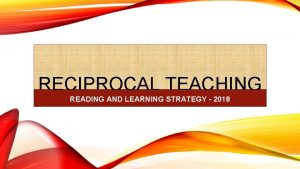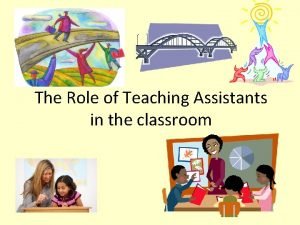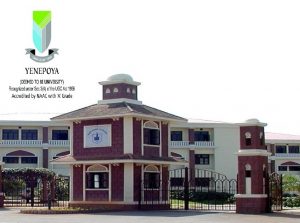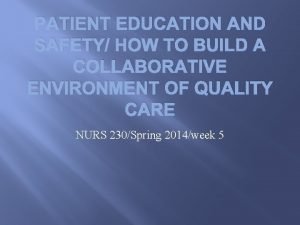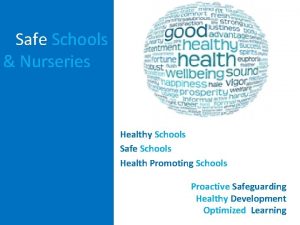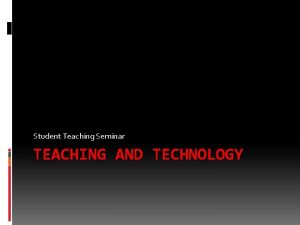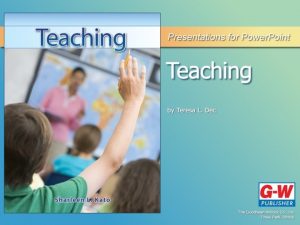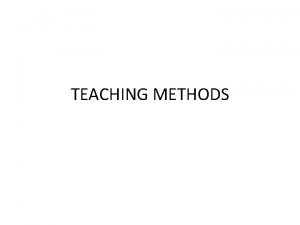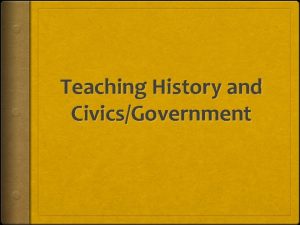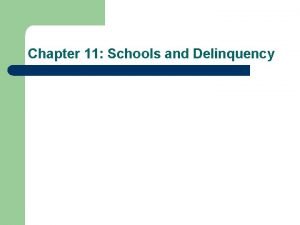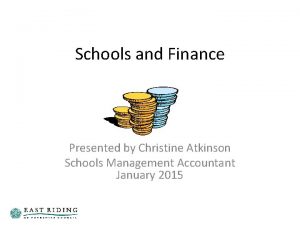The role of teaching schools and the Teaching





















- Slides: 21

The role of teaching schools and the Teaching Schools Council in a selfimproving, school-led system Dr Gary Holden Chair of the Teaching Schools Council and Executive Principal Sir Joseph Williamson’s Mathematical School

• Why teaching schools? • What do they do? • How well do they do it?

The history of teaching Schools ‘The primary responsibility for improvement rests with schools, and the wider system should be designed so that our best schools and leaders can take on greater responsibility, leading improvement work across the system’ The Importance of Education, Df. E, 2010

Educational Excellence Everywhere • Schools are accountable for their own improvement • Government supports the growth of a selfsustaining, self-improving, school-led system • Collaboration between schools is the most effective way to bring this about • Teaching school alliances and multi academy Trusts are the preferred vehicles for collaboration

“Where great schools, great leaders and great teachers exist, we will let them do what they do best – helping every child to achieve their full potential. Where they do not, we will step in to build capacity, raise standards and provide confidence for parents and children”

The government’s education strategy (with thanks to Robert Hill) 1. 3. We must raise standards to match the rest of the world The market (choice and diversity) help drive improvement Schools are responsible for the quality of teaching and learning System leadership + school-to-school support & will help make improvement selfsustaining 2. 4.


A more focussed role for teaching schools? • Co-ordinate and deliver school-based teacher training • Provide or broker school-to-school support • Provide professional development for teachers and leaders • Broker access to system leaders Education Excellence Everywhere, Df. E, 2016

TSC – CURRENT NATIONAL PICTURE Teaching Schools The Current Picture § 736 Teaching Schools § 9 TSC regions, increasingly made up of a number of sub-regional groups – leading on: ITT; CPD; S 2 SS § Diverse and representative membership: nursery; primary; secondary; special; academies; independent; sixth form colleges § 7, 500 Specialist Leaders of Education § 1, 200 National Leaders of Education § 510 National Leaders of Governance

The Teaching Schools Council www. tscouncil. org. uk @Teach. Sch. Council

The Teaching Schools Council: Our Values • Every child attends a great school • Every school and every teacher receive the support they need to make this happen • Every school works in partnership as part of a mature, school-led system

The Role of the Teaching Schools Council • Engage with Df. E in the development and implementation of policy • Represent the voice of Teaching Schools • Facilitate regional partnerships • Support the development of regional action plans • Broker school to school support

No school an island in a mature, school-led system • Support existing teaching schools to work in regional partnerships • Build the capacity of aspiring teaching schools (succession planning); • Ensure more new teaching schools are in our most disadvantaged areas; • Develop regional action plans to address shared priorities

London Region as a Case Study • Chairs of five sub regions meet regional TSC lead on a regular basis • Chairs of sub-regions appointed and resourced to undertake their new coordinating role (role descriptors being drawn up) • Reviewing boundaries of sub regions • All funding to come through sub regional meetings to enable the system to organise the interventions and activities that the system itself needs • Sub regions to be able to identify future leadership potential • TSC leads and 5 Chairs to meet RSC regularly to share knowledge and help broker support

The East Midlands Infrastructure East Midlands Teaching School Alliances (EMTSA) Network All 54 designated Teaching Schools Council East Midlands Teaching Schools Strategic Group (EMTSSG) EMTSA rep Representatives x 2 Derby City Local Infrastructure Representatives x 2 Derbyshire Local Infrastructure Representatives x 2 Leicester City Local Infrastructure Representatives x 2 Leicestershire Local Infrastructure Representatives x 2 Lincolnshire Local Infrastructure Representatives x 2 Northamptonshire Local Infrastructure Representatives x 2 Nottingham City Local Infrastructure Representatives x 2 Nottinghamshire Local Infrastructure Representatives x 2 Rutland Local Infrastructure TSC lead

Working through structured collaboration Performance Stage 1 Isolation Effective emerging innovation Research Best practice Stage 2 Initiation Stage 3 Engagement Effective emerging innovation Research Best practice Best Research practice Schools School Source: George Berwick and Challenge Partners Time Stage 4 Integration Effective emerging innovation Research Best practice


Why work in partnership? • Learning from each other • Shared staffing, systems and processes • Aligning priorities • Making best use of scarce resources • Professional development opportunities for staff • Strengthening community • No school unsupported 18

Half way there? There is compelling evidence of the strides that teaching schools and their alliances have made in developing the necessary relationships, social and intellectual capital and collaborative activities to improve the professional practice of teachers and schools leaders within and beyond TSA partnerships. As yet, the quantitative evidence of the success of TSAs in driving improvement in terms of raising pupils’ academic outcomes in individual schools across the alliance partnership is limited. University of Nottingham, 2016

“One aspect of our fragmentation is the gaps between sectors of our cities and neighborhoods; businesses, schools, social service organizations, churches, government operate mostly in their own worlds. Each piece is working hard on its own purpose, but parallel effort added together does not make a community. Our communities are separated into silos; they are a collection of institutions and programs operating near one another but not overlapping or touching. This is important to understand because it is this dividedness that makes it so difficult to create a more positive or alternative future—especially in a culture that is much more interested in individuality and independence than in interdependence. The work is to overcome this fragmentation. ” ― Peter Block, Community: The Structure of Belonging

• Children grow to fill the space we create for them, and if it’s big, they grow tall. The best present we can give our children is the chance to do something great. It’s a gift that will last a lifetime and transform their lives. Jonathan Sacks, 2008
 Reach schools safety schools and
Reach schools safety schools and Huntsville city schools powerschool
Huntsville city schools powerschool Azure worker role
Azure worker role Role making krappmann
Role making krappmann Role conflict occurs when fulfilling the role expectations
Role conflict occurs when fulfilling the role expectations Objectives of teaching economics at higher secondary level
Objectives of teaching economics at higher secondary level Reciprocal reading role cards
Reciprocal reading role cards Role of a teaching assistant
Role of a teaching assistant Dis advantage of micro teaching
Dis advantage of micro teaching Role of nurse in patient teaching ppt
Role of nurse in patient teaching ppt Phases in micro teaching
Phases in micro teaching Hình ảnh bộ gõ cơ thể búng tay
Hình ảnh bộ gõ cơ thể búng tay Ng-html
Ng-html Bổ thể
Bổ thể Tỉ lệ cơ thể trẻ em
Tỉ lệ cơ thể trẻ em Gấu đi như thế nào
Gấu đi như thế nào Thang điểm glasgow
Thang điểm glasgow Bài hát chúa yêu trần thế alleluia
Bài hát chúa yêu trần thế alleluia Kể tên các môn thể thao
Kể tên các môn thể thao Thế nào là hệ số cao nhất
Thế nào là hệ số cao nhất Các châu lục và đại dương trên thế giới
Các châu lục và đại dương trên thế giới Cong thức tính động năng
Cong thức tính động năng






